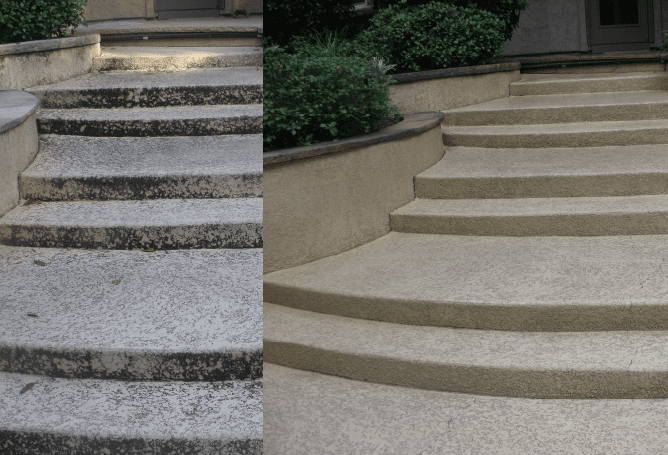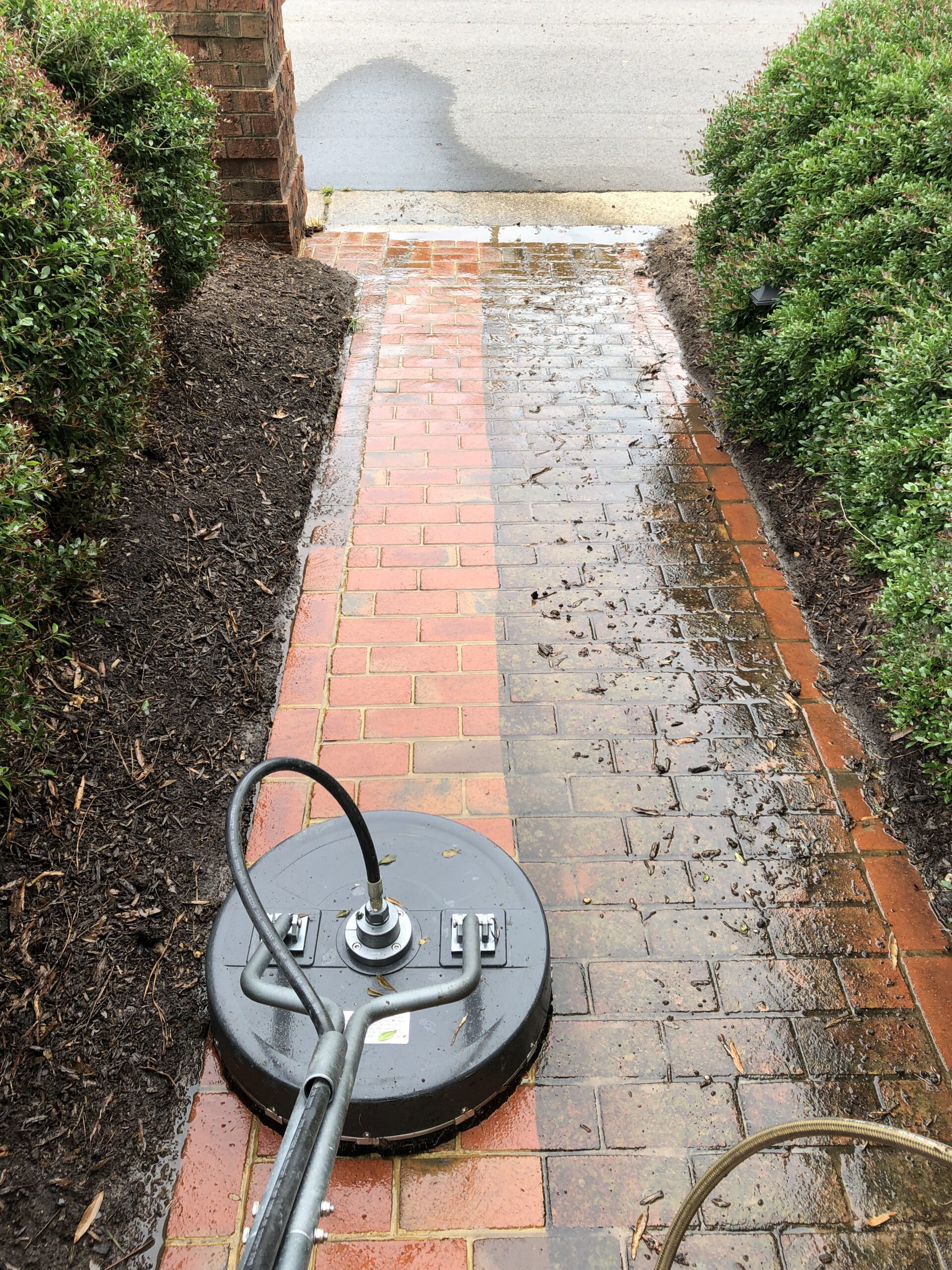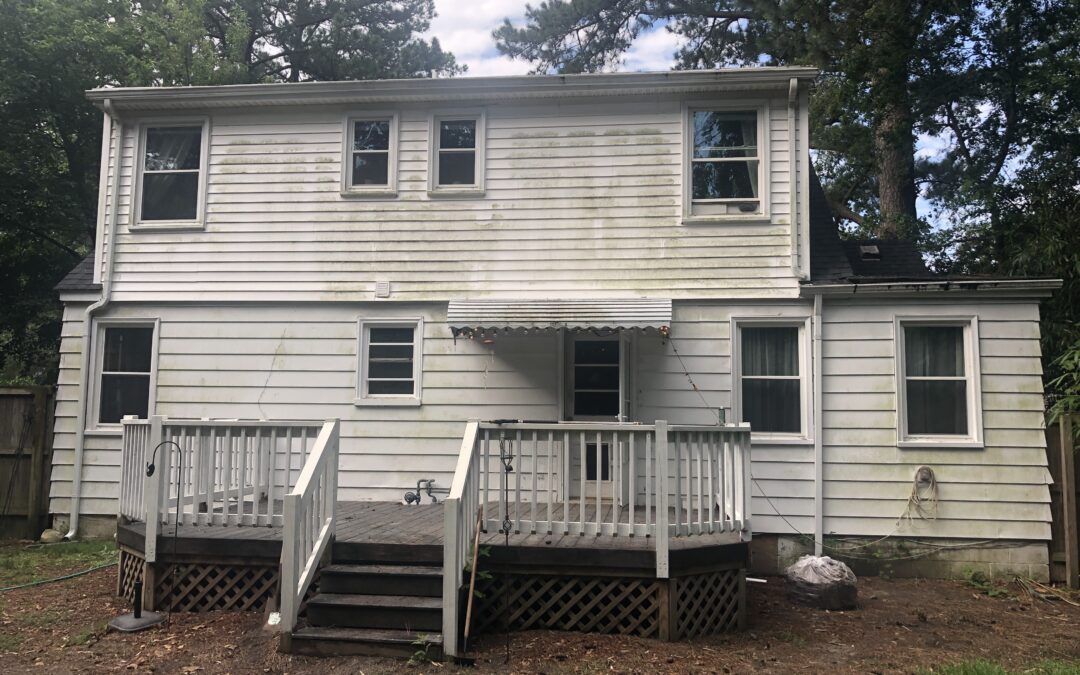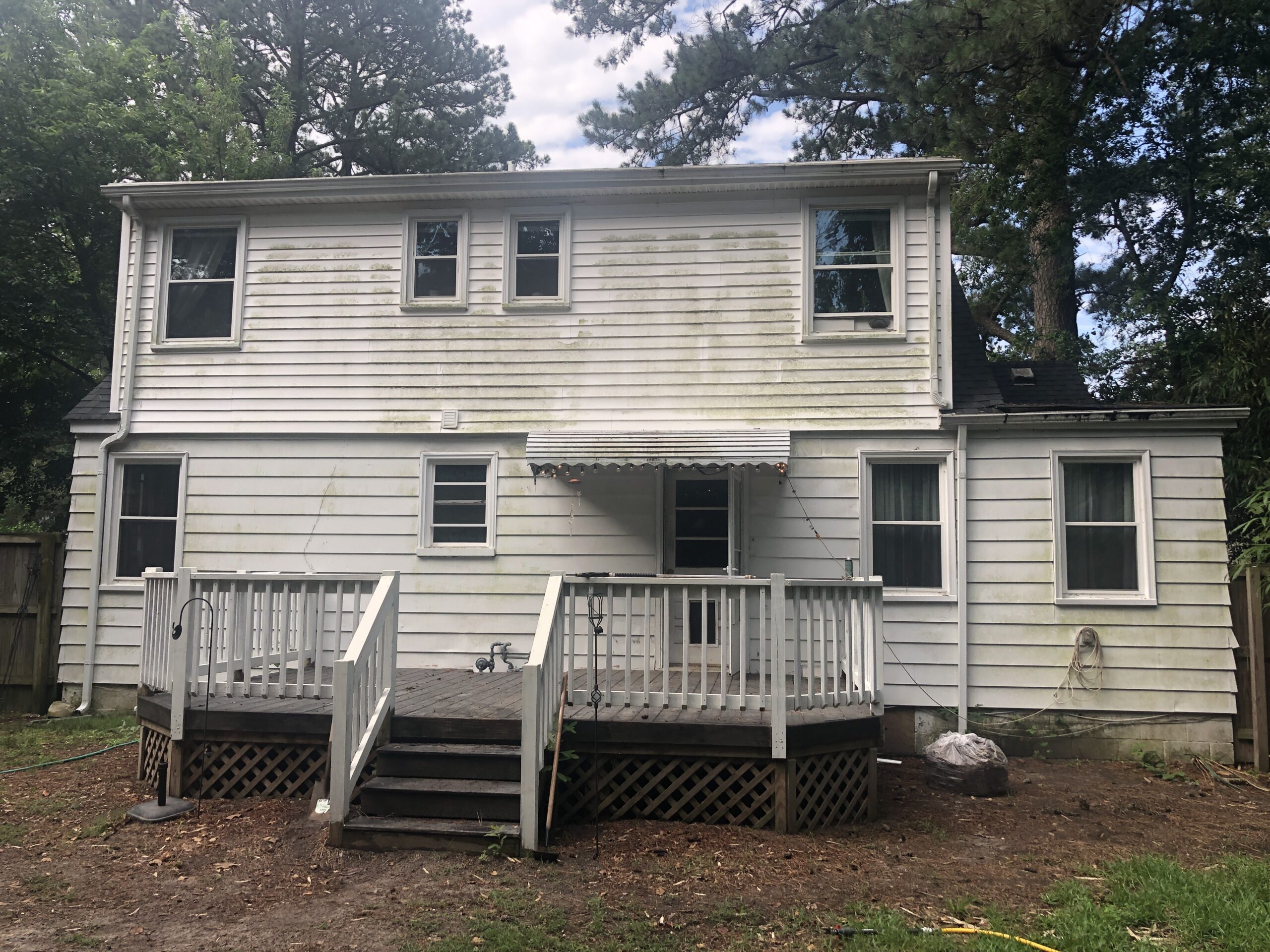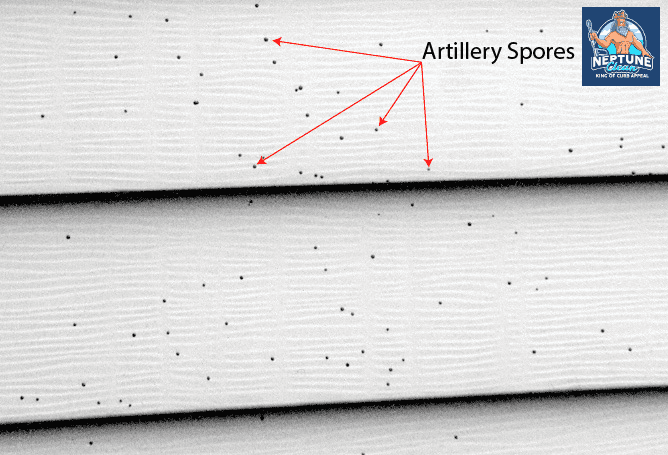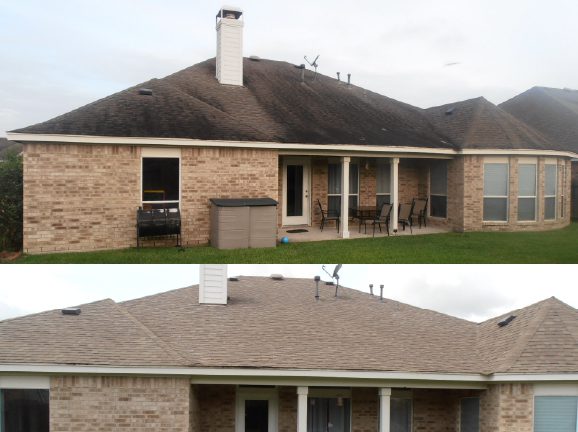
How to Clean Concrete And Save Money
How to Clean Concrete
In this article we provide the reasons you should considering cleaning concrete at least once per year and the 4 easy steps on how to clean concrete.
Driveways, patios, walkways, and porches are hard surfaces that should be cleaned once or twice a year. Here in Hampton Roads, Virginia, the fall and winter weather recks havoc on your concrete, pavers, or other hard surfaces. It brings leaves, gum-balls, and other debris down causing stains. Moisture also plays a role in providing a breading ground for mold, mildew, or algae.
How to clean concrete depends on the stains. I recommend cleaning concrete with a agent specifially designed for the type of stain. You should consider doing this biannually to avoid a buildup of grime and tough stains that will require a professional cleaner.
If you already have tough stains or like the to push the easy button, the stop right now and call Neptune Clean at 757-384-0411. If you’re a hard-core DIY’er looking to save some money, then please keep reading.
Call Neptune Clean Today! 757-384-0411
How To Clean Concrete, Step by Step
Step 1. The first thing you need to do is to remove any loose debris from the surface. A blower would be my first choice but if all you have is a broom then by all means start pushing it.
Step 2. Now that the surface is free loose debris, look for any standing liquid such as grease, oil, or perhaps wine (you never know). Since grease and oil stains are the most common and you’ve got what looks like wet oil standing, grab some Oil Dry from the garage and pour it on the spot. Kitty litter may work as well so pore it on and allow it to soak up the excess liquid for about 30 minutes.
Step 3. Once it’s all soaked up, grab that broom and dustpan and sweep up the Oil Dry or kitty litter from the surface. Now the surface is ready for cleaning.
Step 4. Choose your preferred cleaning product. You can probably find a ready-made concrete cleaning solution from your local big-box home store. I’ve heard everything from Pine-Sol multi-surface cleaner, Coke, vinegar and baking soda, to good old bleach and water.
- Detergents are recommended for smaller grease or oil spills. A strong detergent, water, a scrub brush, a sponge, and lots of elbow grease should do the trick.
- Vinegar and baking soda are best for those natural cleaning enthusiasts who have delicate plant life nearby. Fill a spray bottle with equal parts water and vinegar (or water and baking soda) and add a little dish detergent for a degreaser. Spray it on your concrete surface and let dwell for 30 minutes. Next is the elbow grease scrubbing action mentioned in the previous step.
- Concrete cleaners purchased from your local big box store are made from concentrated alkaline soap. These will go to work loosening oil and grease for easy cleanup. If your stains are fresh, this should work well. If the stains have been there for a while, it probably won’t work well.
- Bleach is best for cleaning large areas and works well on organic materials staining concrete. Simply fill a bucket with warm water and ¾ cup of liquid bleach and start mopping it on. Again, let the solution dwell for 15-20 minutes. Next get your brush or a push broom with stiff bristles and begin scrubbing the surface. Once you’ve loosened up all the dirt, mold, mildew or algae, simply wash the surface with a hose. The bleach will be diluted even more with rinse water so it’s safe to wash it away.
Another method would be to rent a pressure washer and surface cleaner from your local tool rental store. Of course, by the time you drive there, bring home these heavy tools, clean your driveway, load the equipment back into your truck and return it, you could have spent the same amount and had it cleaned by a professional.
My final recommendation would be to simply press that easy button and CALL NEPTUNE CLEAN today at: 757-384-0411 or click this link for Instant Quotes.

